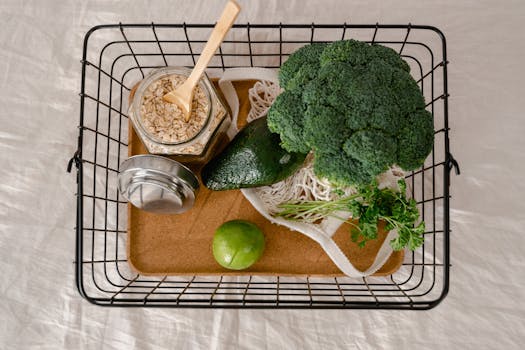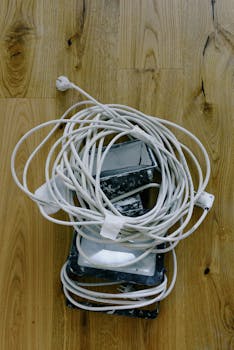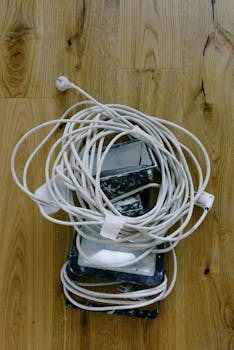Household Economy
Bulk Buying vs. Small Purchases: What Really Saves Money?
Skip the guesswork: Does bulk buying or picking up small purchases really save more in the long run? See real tips, comparisons, and tricks to keep your wallet happy.
Advertisement
That feeling of walking out of the store with a shopping cart loaded with family-sized packs and hefty jars is familiar to many. People chasing savings might find themselves weighing the merits of bulk buying versus sticking to smaller, frequent purchases. It’s easy to assume that grabbing more at once always brings better deals, but there’s more to the story.
It’s not just about reducing price per unit with bulk buying; there are hidden costs and benefits at play. The question isn’t simply, “Which costs less?” but rather, “Which strategy fits your habits, storage, and lifestyle?” Every shopper faces unique challenges and priorities when thinking through these options.
By looking into real scenarios and the math behind each approach, you’ll discover guidance tailored to actual buying habits. Dive in for side-by-side breakdowns, actionable tactics, and practical examples you can apply on your very next trip.
Evaluating Real Savings: What Stays in Your Wallet After Bulk Purchases
Assessing the impact of bulk buying on your budget starts with clarity on consumption patterns. Evaluate how much you genuinely use per week so you’re not fooled by low per-unit prices attached to extra-large packages.
For example, a person living in a small apartment without much pantry room may lose out if food spoils before it’s eaten. Effective savings hinge on matching purchase size with lifestyle and realistic usage habits.
Spot the Unused: Recognizing Overbuying Traps
Notice when your fridge collects wilted greens or leftovers pushed to the back. If you regularly throw out unused food, bulk buying may create more waste than savings.
Watch patterns: “We bought the twenty-pack and only used four before the rest spoiled.” That’s a sign to scale back and do a per-meal calculation before tossing anything extra into your cart.
Avoid assuming that a larger package always equals better value without checking your actual usage rates first. Always relate savings to real consumption, not just sticker price.
Storage Reality Check: If It Doesn’t Fit, It Won’t Save
Piling up toilet paper towers might feel proactive, but consider space—especially in tighter homes. If new items get lost or squished, you’re less likely to use them effectively.
Picture a friend saying, “We had to pile boxes in the hallway for weeks.” That’s more stress than savings. Optimize your living area by only grabbing what fits comfortably and can be cycled through.
Practical take: Place new bulk items at the front of shelves, not buried, so you grab them first. This step keeps purchases visible and encourages consistent use.
| Product Type | Bought in Bulk | Bought in Small Quantities | Best Strategy |
|---|---|---|---|
| Pantry Staples (Rice, Beans) | Lower price per pound | Freshness if used slowly | BULK — If you cook regularly |
| Fresh Produce | Shorter shelf life, spoilage risk | Less wasted food | SMALL — Buy for week or less |
| Paper Goods | Lower cost per roll/sheet | Easy storage needed | BULK — Only if you have room |
| Perishables (Milk, Dairy) | Risk of expiration | Flexibility to buy on sale | SMALL — Avoid waste |
| Frozen Foods | Great if freezer space | Limits variety | BULK — Only if used often |
Identifying Hidden Costs and Practical Benefits for Your Situation
Knowing the subtle expenses tied to bulk buying—like spoilage, storage needs, and cash flow—is key to locking in actual savings. Focus on total value, not just sticker prices or advertised discounts.
Cash flow changes when spending large amounts upfront. Your budget might feel squeezed if you tie up funds in food or supplies lasting several months.
Balancing Upfront Investments and Flexibility
Committing to a warehouse club or buying bulk-size household goods might save per unit. Still, it means less flexibility for shifting needs or new brands.
Bulk purchases rarely match every lifestyle smoothly. If your tastes change or guests drop by, excess inventory may go unused or become a storage hassle.
- Track actual savings by subtracting wasted items. Calculate by dividing total cost by what you use, not buy.
- Rotate pantry stock: use older products first to prevent hidden waste or overlooked expiration dates.
- Divide bulk items with friends or family, so nobody gets overwhelmed with excess. Share costs, share rewards.
- Schedule purchase reminders for non-food items (toilet paper, detergent) to avoid surprise shortages or accidental overstock.
- Choose products with longer shelf-lives for bulk buying—soap, cleaning supplies, canned goods—and avoid perishables unless usage is steady.
Avoid overcommitting funds if your income or spending is tight, especially if bulk goods demand a significant front-end investment.
Taming Impulse Buys and Space Missteps
Buying oversized packages can tempt you to overconsume, or fill precious storage with items you rarely use.
Stick to a detailed shopping list when bulk shopping, crossing off each item to avoid non-essential purchases that erode intended savings.
- Customize your list around weekly meal plans, not vague “what if” scenarios. If you don’t have a way to use a whole bag, skip it.
- Measure shelf and freezer space before bulk shopping. Know limits to prevent snack overwhelm or storage stress at home.
- Group purchases with a neighbor and split large packs. Save space, split costs, and reduce waste with less risk per person.
- Freeze or portion leftover bulk items immediately to lock in freshness—label and date so nothing gets forgotten or tossed later.
- Review household routines each month. If unopened products linger, adjust purchase quantity or frequency for future trips.
Bringing mindful planning to your shopping trips lets you maximize value on a realistic, personalized level—no guesswork required.
Matching Bulk Buying to Your Household Size and Lifestyle
Choose a buying strategy directly aligned with your household size and typical meal frequency for consistently better results. Matching approach to realistic needs prevents overbuying and frustration.
If you’re part of a large family or host groups regularly, bulk goods bring welcome savings and convenience. The key is keeping a pulse on what disappears from your cabinets fastest.
Pairing Consumption Rates with Buying Frequency
Daily lunch packers see value in bulk snack or deli meat purchases; solo snackers fare better with smaller, diverse buys to keep flavors and freshness rotating.
One person living alone probably won’t use up giant tubs before expiration but might benefit from multi-packs of shelf-stable staples like pasta or rice.
Check in weekly: Are your cabinets emptying as planned? If not, reduce volume next time and swap in shorter shopping cycles.
Adapting to Changing Routines and Needs
Semiannual visitors or lifestyle shifts—like new dietary goals or schedules—should be reflected in your shop list. Don’t assume the working system from last year still fits now.
If portion sizes shrink during busy seasons, scale bulk buying to essentials only, like freezer-friendly or non-perishable favorites. Downsize if hosting or school lunch routines shift.
Create a short note for the fridge: “Running low?” to remind everyone to report depletion and ward off unnecessary duplicates.
Maximizing Perishable and Non-Perishable Purchases Separately
Apply different purchasing rules to perishables versus shelf-stable goods for lasting gains. Base every bulk purchase on product type, not just instant discounts.
For fruit, veggies, and dairy, stick to frequent, smaller buys until you confirm quick usage. For items that rest in your cabinets for months, bulk buying is usually the smarter move.
Preventing Waste with Smart Food Storage
Freeze bread or meat from large packs in meal-sized portions to extend lifespan. Look up best practices for vegetable crispers so greens last a few days longer.
Use airtight bins, bag clips, or vacuum sealers for dry goods, then write purchase dates to remember first-in/first-out principles.
Plan menus around bulk items waiting in your freezer or pantry, combining new purchases with older supplies for zero-waste use.
Best Practices for Non-Food Bulk Buys
Purchase cleaning supplies, toilet paper, and other non-perishables in bulk since they’re unlikely to spoil or expire before use.
Assign a dedicated shelf or closet area to track stock, avoiding duplicate purchases or forgotten reserves.
Schedule monthly closet checks to keep low-rotation items visible so nothing sits idle too long or becomes unusable over time.
Time, Convenience, and the ‘Trip Effect’ in Bulk Buying
Reducing store visits by buying in bulk saves not just money but time, translating to fewer gas costs and less schedule disruption. Still, assess impulsive splurges on mega-retailer trips.
Bigger carts and expansive aisles create the illusion of needing more than you do—set boundaries before entering. List essentials, skip ‘bonus’ items, and limit frequency to control temptation.
Batching Errands for Efficiency
Combine your bulk buying trip with errands to clinics, banks, or other stores to optimize time spent away from home. Group tasks and combine lists for a productive routine.
Stick to a set visit schedule—bimonthly or monthly shopping days—so groceries never run critically low or pile up en masse. Limit quick ‘just in case’ returns in between.
Set a calendar reminder for regular shop cycles. This keeps routine purchases predictable, helps budget planning, and reduces last-minute stress runs.
Navigating Unexpected Store Deals
Spotting a genuine one-day deal on a staple? Take the opportunity—but only if storage and usage lines up. Otherwise, pass confidently and stick to your core plan.
Jot down geo-specific sale dates (first Tuesday of the month or local market hours) in your phone. Comparing prices over time sharpens your strategy and avoids unnecessary panic purchases.
Resist social cues to ‘stock up because everyone else is.’ Align with your own detailed plan and only break it for clear, calculated benefits.
Crafting a Personalized Shopping Approach for Lasting Value
The most reliable savings flow from a method grounded in honest assessment—both of needs and of storage real estate. Any “system” should flex with changes in taste, living arrangements, or season.
Blend bulk buying with smaller, weekly runs to test what works. Track your pantry regularly. Adjust your rhythm to match how daily life unfolds, not just what flyers or apps promise.
Case Study: Tailoring Family Buying Habits
One family might say, “We bulk buy oatmeal, pasta, and paper towels, but stick to weekly milk and veggie runs.” This mix leverages bulk values but avoids overflow and fridge waste.
They keep a master grocery list posted in the kitchen, updating it on the fly whenever items run low. This habit reduces duplicates and panic-purchasing.
Anyone can copy this approach—combining staples in bulk with short, targeted refill trips—by noting what disappears from your home most quickly.
Case Study: Single Adult in Tight Living Quarters
Living solo in an apartment, you might build a routine around bulk buying snack bars for work and laundry detergent, but buy produce at the corner market every two days.
Organize limited cabinet space with labeled baskets, keeping slow-moving goods in plain sight and donating extras before they spoil or clutter your shelves.
Test different rhythms—weekly or monthly—until you find the groove where zero food spoils and shelves look organized, not burst at the seams.
Future-Ready Savings: Building Habits That Adapt and Scale
True savings compound over time by pairing bulk buying with personal routines and changes. Adjusting your approach on a seasonal or annual basis will protect you from surprise waste and inefficiency.
Anchor every new method in habit-building: monthly inventory checks, visible grocery lists, and household buy-in for tracking what gets used first.
Final thought: Start simple—test, revise, and only expand into true bulk quantities when ready. Track real wins, not just shelf space filled.
Frequently Asked Questions
- What kinds of items make sense for bulk buying at home?
Focus on products with long shelf lives and consistent use, like toilet paper, pasta, or cleaning supplies. Avoid bulk perishables unless you have the storage and a proven consumption routine. - How can I avoid wasting food if I try bulk buying?
Always check your household’s weekly consumption before making large purchases. Divide goods into portions for freezing or sharing, and keep track of expiration dates with labels or a pantry spreadsheet. - Is there a way to split bulk purchases if I live alone?
Yes, split packages with friends, family members, or neighbors. This method gives access to lower prices and variety without the risk of waste or over-stuffing your home. - When do small, frequent purchases make more sense?
Small purchases benefit those with limited storage, varying tastes, or changing routines. They’re best for fresh produce, dairy, and products consumed slowly or unpredictably across each week. - How can I start tracking which method saves me more?
Retain receipts, tally weekly or monthly spend, and compare with what’s actually consumed over time. Check for waste by reviewing what spoils or goes unused, and adjust strategies to balance convenience, savings, and lifestyle.





